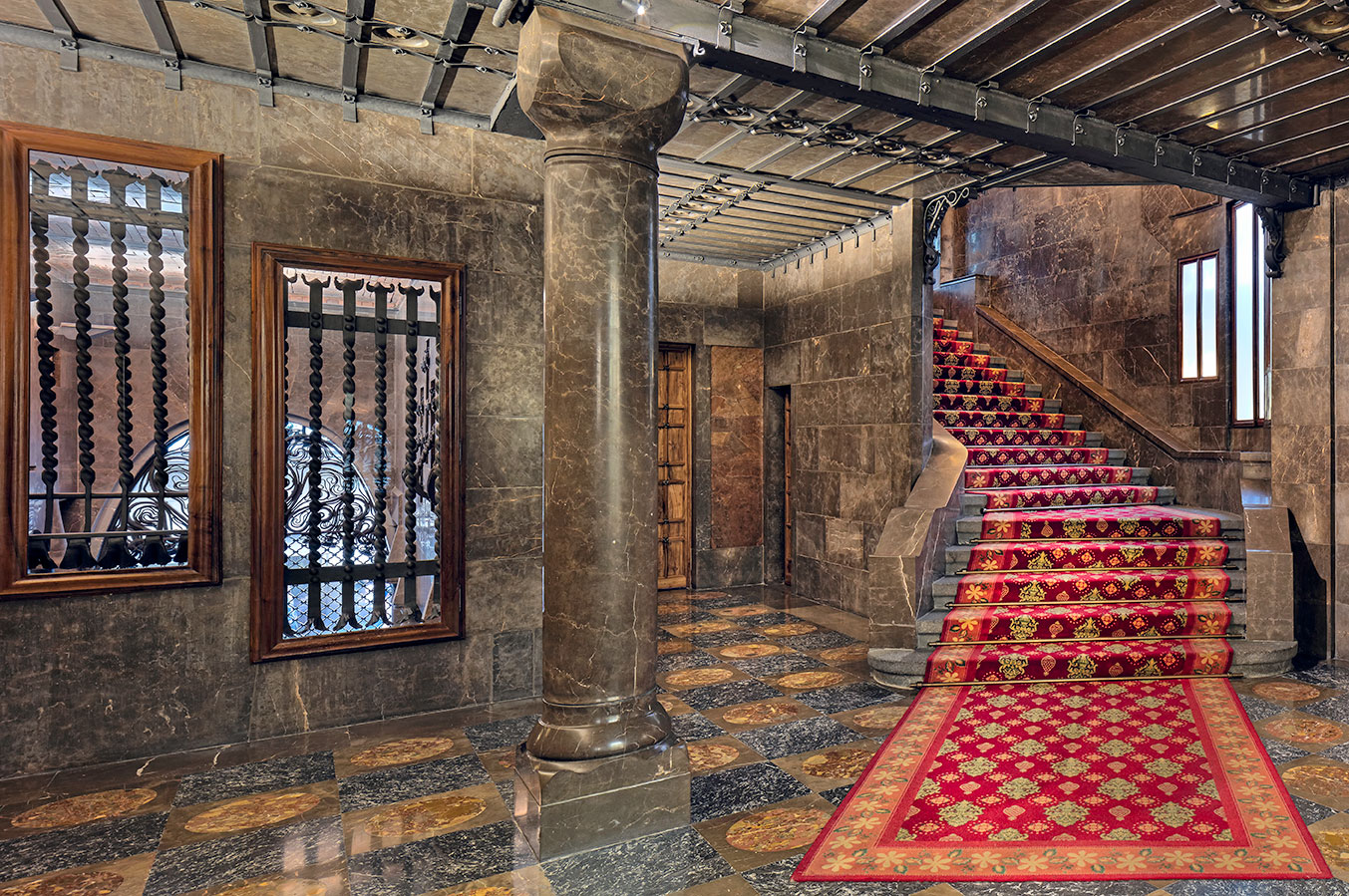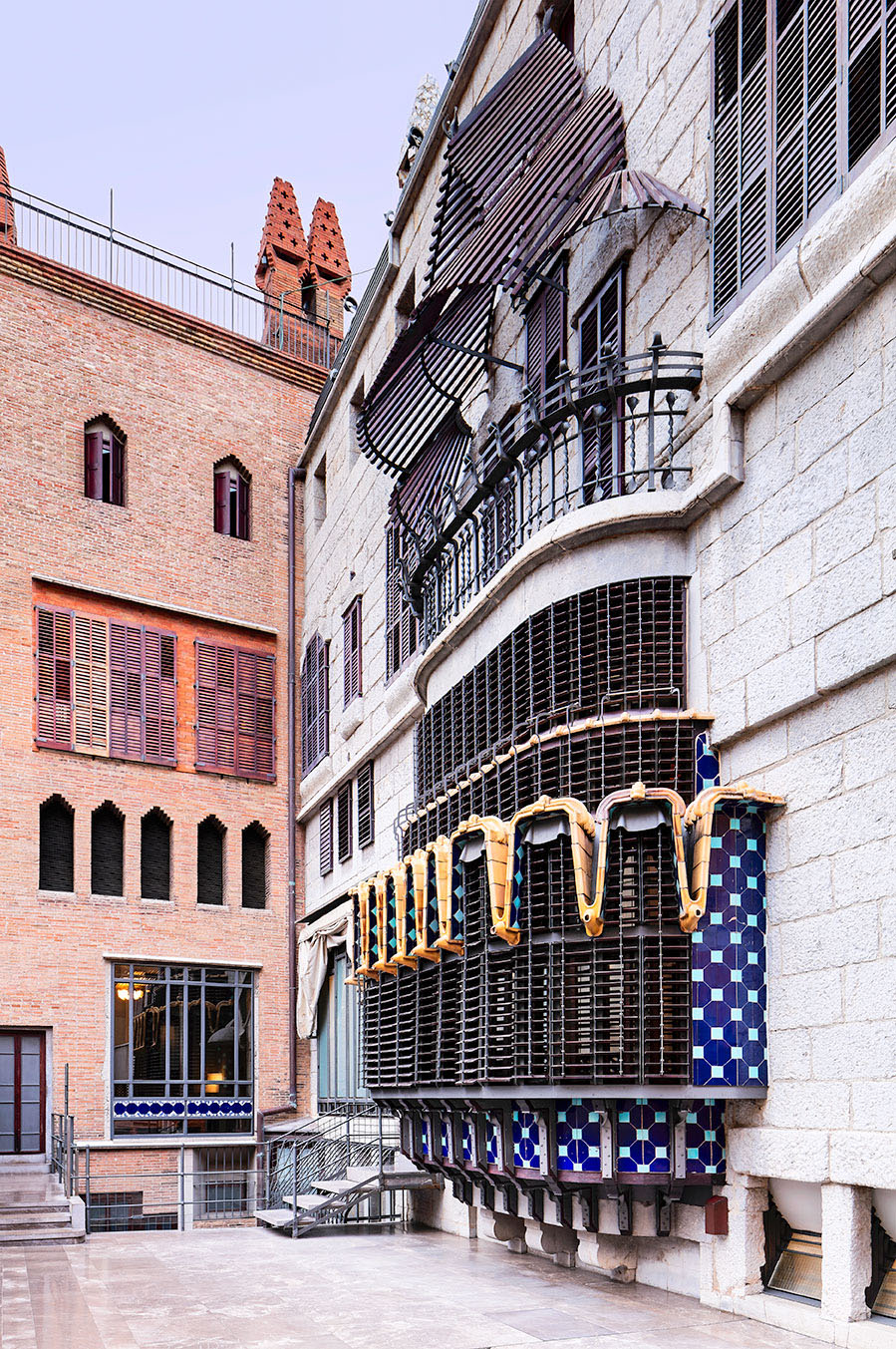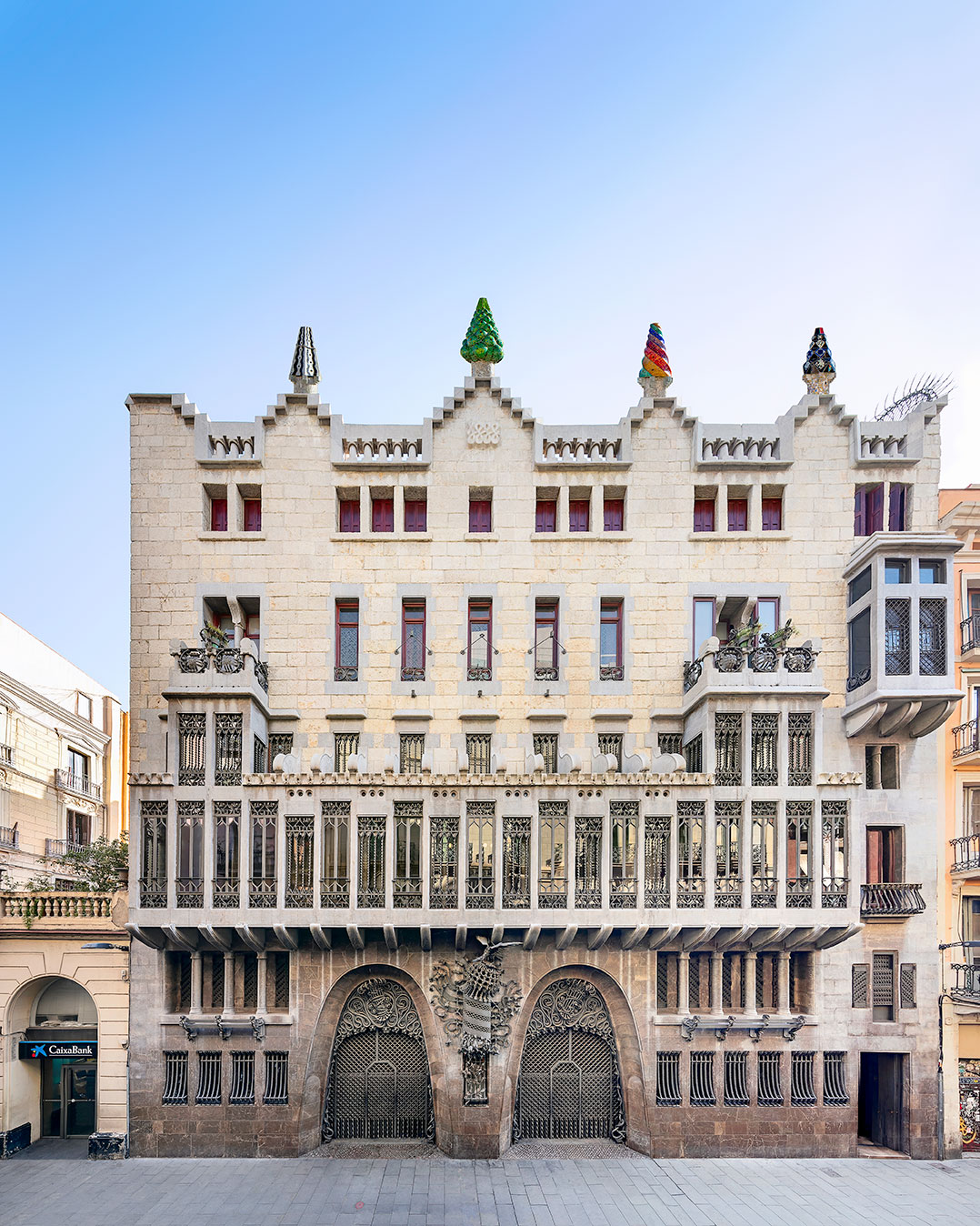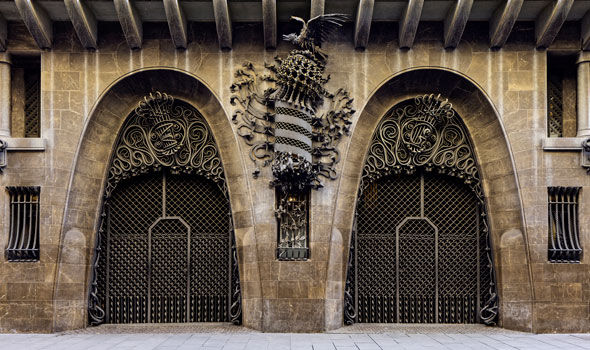Palau Güell
Palau Güell in Barcelona was Antoni Gaudí’s first commission from Eusebi Güell in 1885. It is a city mansion full of every conceivable kind of luxury and located in one of the most popular, and most run-down, districts of Barcelona at the time: the Raval district.
Interestingly, most of the families belonging to the Catalan bourgeoisie at the time preferred to establish their residence in the Eixample district. Ildefons Cerdà’s urban development plan proposed a new configuration of the urban space, with parks and gardens within blocks. Therefore, it is no surprise that the city’s wealthy families wanted to live in this new district.

Where is Palau Güell?
Today, Palau Güell is located on Nou de la Rambla, 3-5. Until 1979 this street was called Conde del Asalto and it was the first in Barcelona to be built with pavements, a drainage system and two lanes of traffic.
How to get there You can get there by Metro, getting off at the Liceu stop (Line 3) or by bus (Lines 14, 59, 91, 120 and Barcelona Bus Turístic).
Eusebi Güell paid 195,000 pesetas (€1,175) for a 589 square metre plot, which Gaudí made the very most of. In total, the building has 2,850 square metres over seven floors, and all rooms are based around the central hall.
Eusebi Güell’s mansion had a dual function: on one hand, to house his large family and, on the other, to host all of the events from his active social life. He therefore needed both public and private areas.
History of Palau Güell
Building began on Palau Güell in 1885 and it was finished in 1890. It is a surprising building, taking into account the contrast to his earlier work.
While its exterior is seemingly understated and almost devoid of decoration, it is a surprise to discover its lavish interior. Rooms are distributed around a central hall, which is rather like an internal courtyard and serves as a source of light.

In 1936, with the outbreak of the Civil War, the Mansion was seized and used as a police barracks with jails.
Façade of Palau Güell
Gaudí designed a simple, yet brilliant, façade, which stands out within the neighbourhood, located on a narrow street with limited views. Two years before Güell Palace was finished, Edén Concert music hall was opened opposite, dedicated to concerts and variety shows. Gaudí’s work, and specifically the façade that he designed, emerged as a way to counterbalance the extravagance of the music hall and of the district in general.

Despite the simplicity of Gaudí’s façade, the Catalan architect did not overlook the volumetric range of the stone and iron that he combined with the use of ceramics. Its symmetry, volumetry and padded appearance inevitably resemble the Florentine palaces of the Renaissance.
The façade, which is 22 metres high and 23.60 metres wide, has three horizontal levels:
– The lower level, with two large catenary arches.
– The middle level, dominated by the large gallery.
– The upper, simpler level, crowned by a balustrade.
The entryway to the building, one of the most original designed by Gaudí, features a wrought iron masterpiece on the gates of the two catenary arches. The two entrance doors are 4.9 metres high and stand out due to the way they are adorned, with vegetable, animal and symbolic elements that are at their finest on the spandrels, which hold the initials of the developer, Eusebi Güell.
On the lower part, the master forger Joan Oñós created a lattice that enabled residents to observe what was happening on the street without being seen, respecting their privacy. Between these two entrance arches the gatehouse is located, a small window crowned by a 3.50 metre high crest that represents the senyera, the four-striped Catalan flag that, in this case, are depicted with flat iron and metallic netting.
A helmet crowns this representation of the senyera, in allusion to strength, one of the four cardinal virtues. At the very top stands a Phoenix, a mythical animal that is an emblem of the economic and cultural renaissance experienced by Catalan society.
